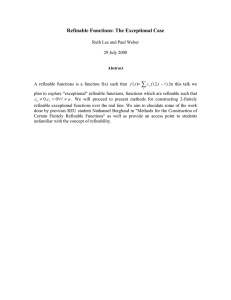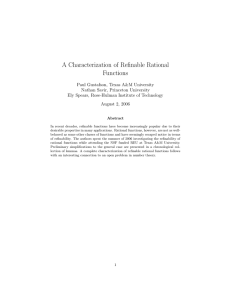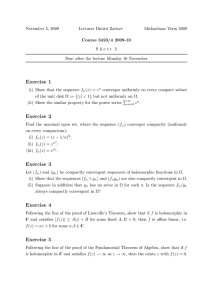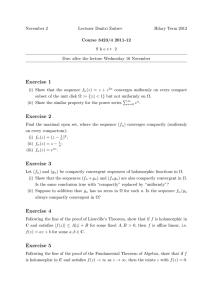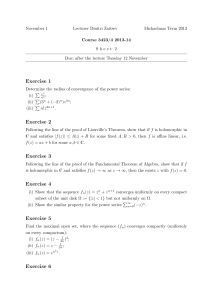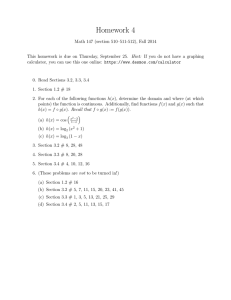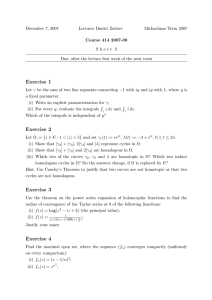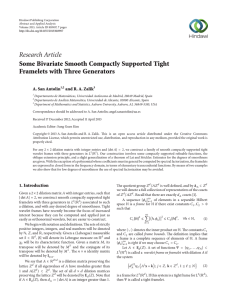2 and 3 Refinable Functions David Malone 22 December 1999 1
advertisement
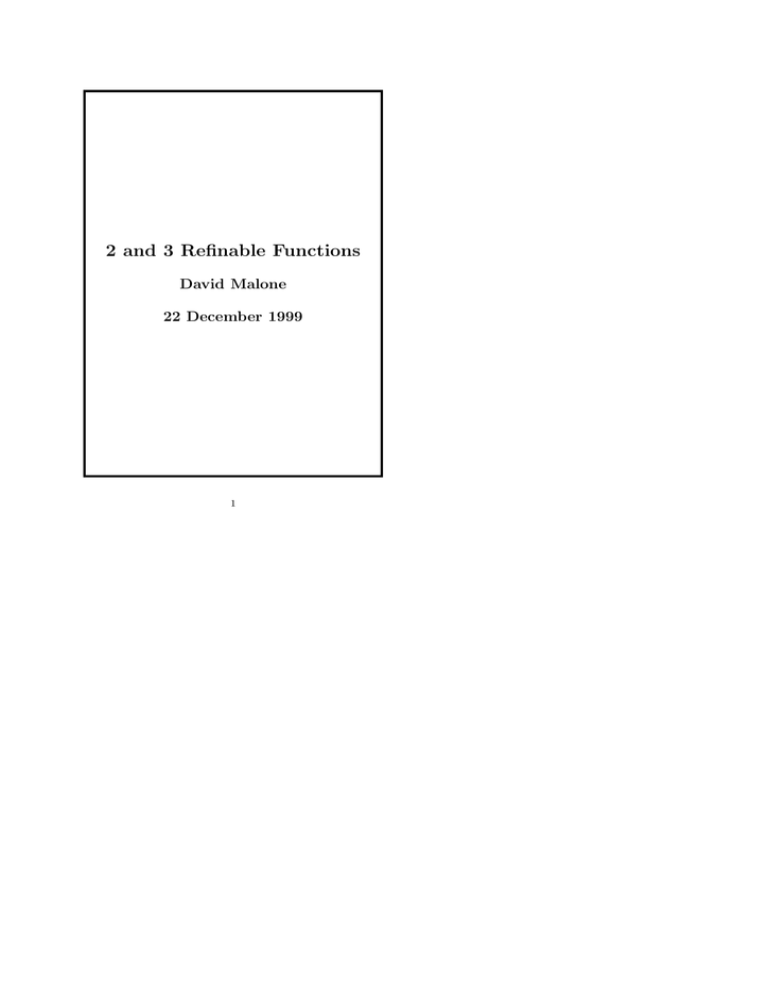
2 and 3 Refinable Functions David Malone 22 December 1999 1 Refinable Functions A 2-refinable function satisfies: X f (x) = ck f (2x − k). k The equation is a dilation equation. Harr function D4 People are usually interested in compactly supported L1 solutions for P wavelets with ck = 2. In this case there is at most one solution. 2 L2 solutions are not unique. They are in correspondence with L2 (±[1, 2)) or L∞ (±[1, 2)). However, adding more scales gave uniqueness in operator results. What functions are 2 and 3 refinable? ie. X X f (x) = ck f (2x−k) = dk f (3x−k). k k Assumptions: • Only finitely many non-zero ck and dk . • Functions compactly supported. 3 Left Hand End Lemma 1 Suppose P g(x) = dk g(2x − k), and only finitely many of the dk are non-zero. Then we can find l so that when we translate g by l to get f we find: P f (x) = ck f (2x − k), c0 6= 0, ck = 0 when k < 0 and ck = dk−l . Lemma 2 If f is compactly supported and satisfies a dilation equation P f (x) = ck f (2x − k), where c0 6= 0 and ck = 0 when k < 0, then f is zero almost everywhere in (−∞, 0). 4 f (2x − 2) c2 f (2x − 1) c1 c0 f (2x) 0 f (x) 1 f (x) = 2 n X ck f (2x − k) k=0 f (x) = n n+1 x∈ , 2 2 Pn x f 2 − k=1 ck f (x − k) c0 x ∈ [n, n + 1). 5 If you do this for two scales, everything lines up and we get: f (x) = c0 f (2x) = d0 f (3x), on [0, 1/2) ∩ [0, 1/3). Theorem 3 Suppose f is 2 and 3 refinable, say: X X f (x) = ck f (2x−k) = dk f (3x−k), k k and c0 6= 0 and ck = 0 when k < 0. Suppose further that f is integrable on some interval [0, ], then f (x) = γxβ on [0, 1) where β = − log2 c0 = − log3 d0 . 6 In Lp this will be an almost everywhere relationship. So we integrate: Z x F (x) = f (t) dt. 0 We can show this satisfies: n m 2 3 n m F (2 3 α) = F (α) c0 d0 Continuity forces log2 c0 = log3 d0 = −β. So: F (2n 3m α) = (2n 3m )β+1 F (α) One continuous function does this: β+1 F (α) x αβ+1 7 Giving f on [0, 1/3): d β F (α) f (x) = F (x) = (β + 1)x β+1 . dx α From here it is easy so show f must have the form: f (x) = n X al (x − l)β , l=0 on [n, n + 1). For this to be compactly supported β ∈ N. This means that f must be a B-spline. 8 The fact that f behaves like xβ on [0, 1) is interesting, and actually holds in a much looser sense if you have function which just solves one dilation equation. There is a measure of smoothness called the Hölder exponent, where f ∈ C n+s if f is n times differenciable and: |f (x + h) − f (x)| < k|h|s . Now, xβ ∈ C n+s for n + s < β, and it can be shown that for f ∈ C n+s then n + s < β. I have examples which can produce f which are almost this smooth, and in some simple cases this gives the correct smoothness. 9 10 |c0 | 0.683 0.470 0.325 0.2264 0.1577 0.1109 N 2 3 4 5 6 7 3.1831 2.6644 2.1429 1.6179 1.0878 0.550 − log2 |c0 | Coefficents 1.682 1.432 1.177 0.913 0.636 0.339 p226 2.158 1.888 1.596 1.275 0.915 0.500 p232 TLoW 1.6179 1.0878 0.550 p239 2.4348 2.1637 1.9424 1.6066 1.0831 0.550 r20 1.6179 1.0878 0.550 r∞ SRCfSS 2.4604 2.1891 1.9689 1.6179 1.0878 0.550 UB
